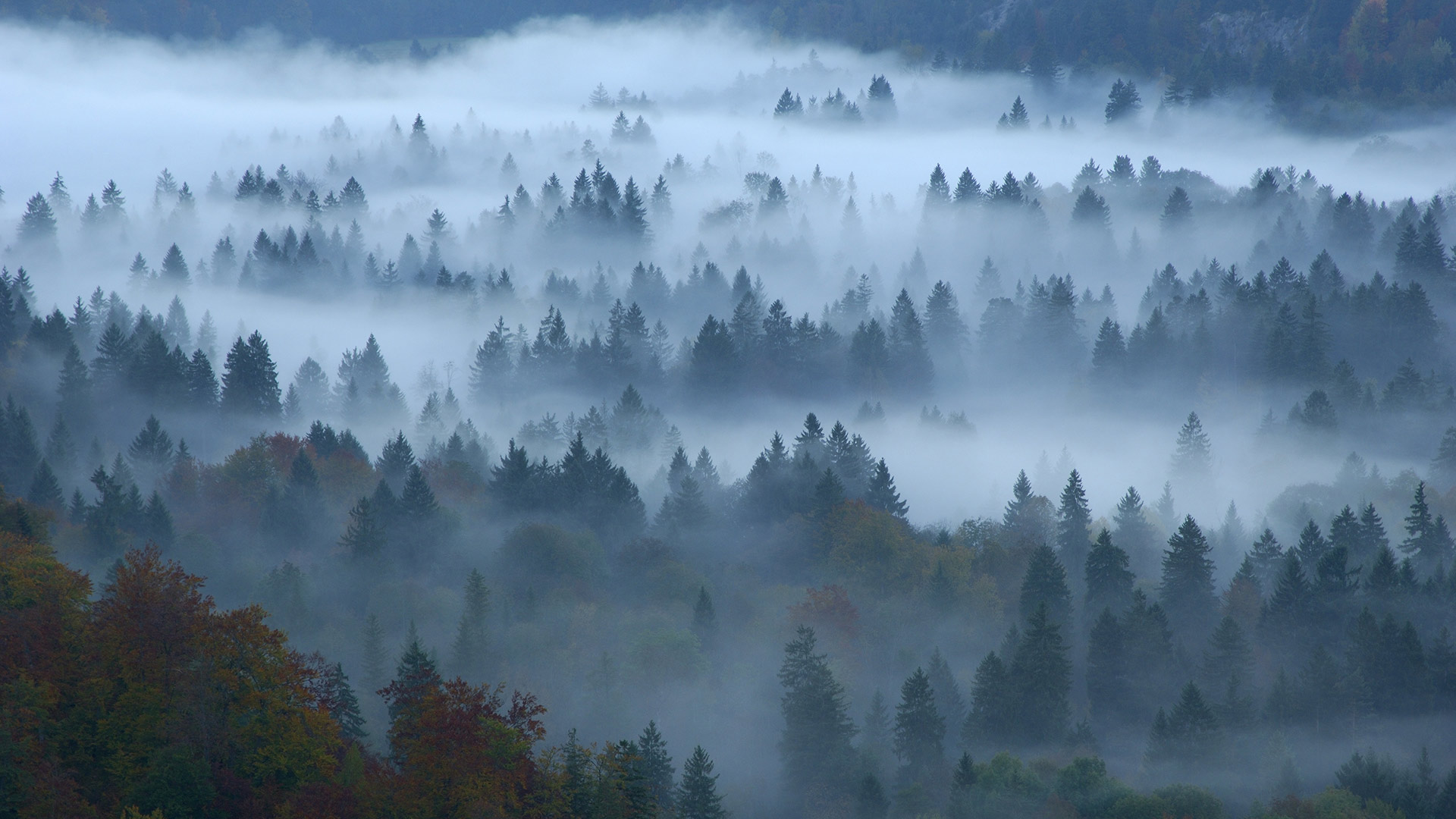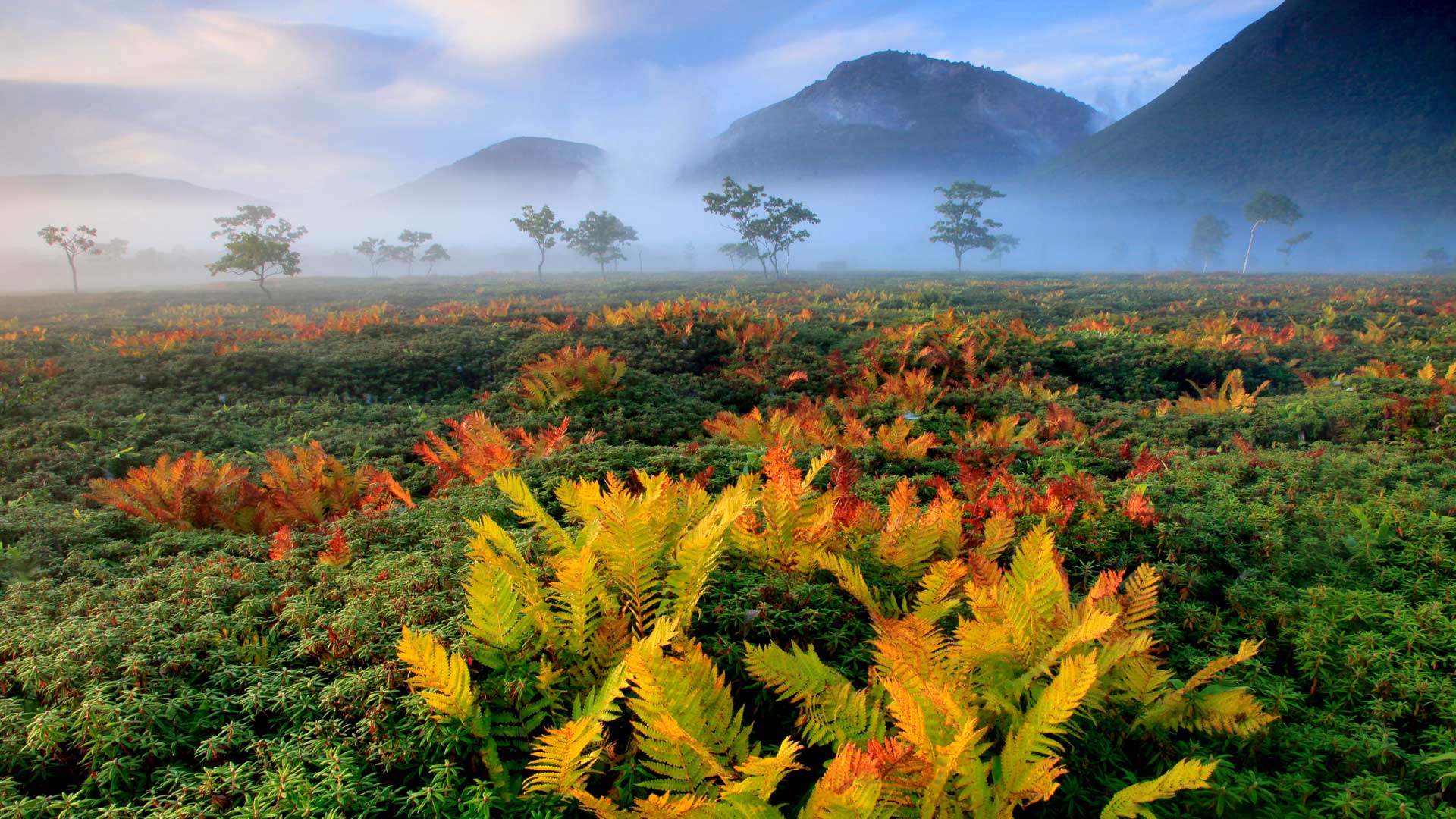中央公园购物中心的美国榆树丛,纽约市 A grove of American elm trees in Central Park's Mall, New York City (© AWL Images/Danita Delimont)
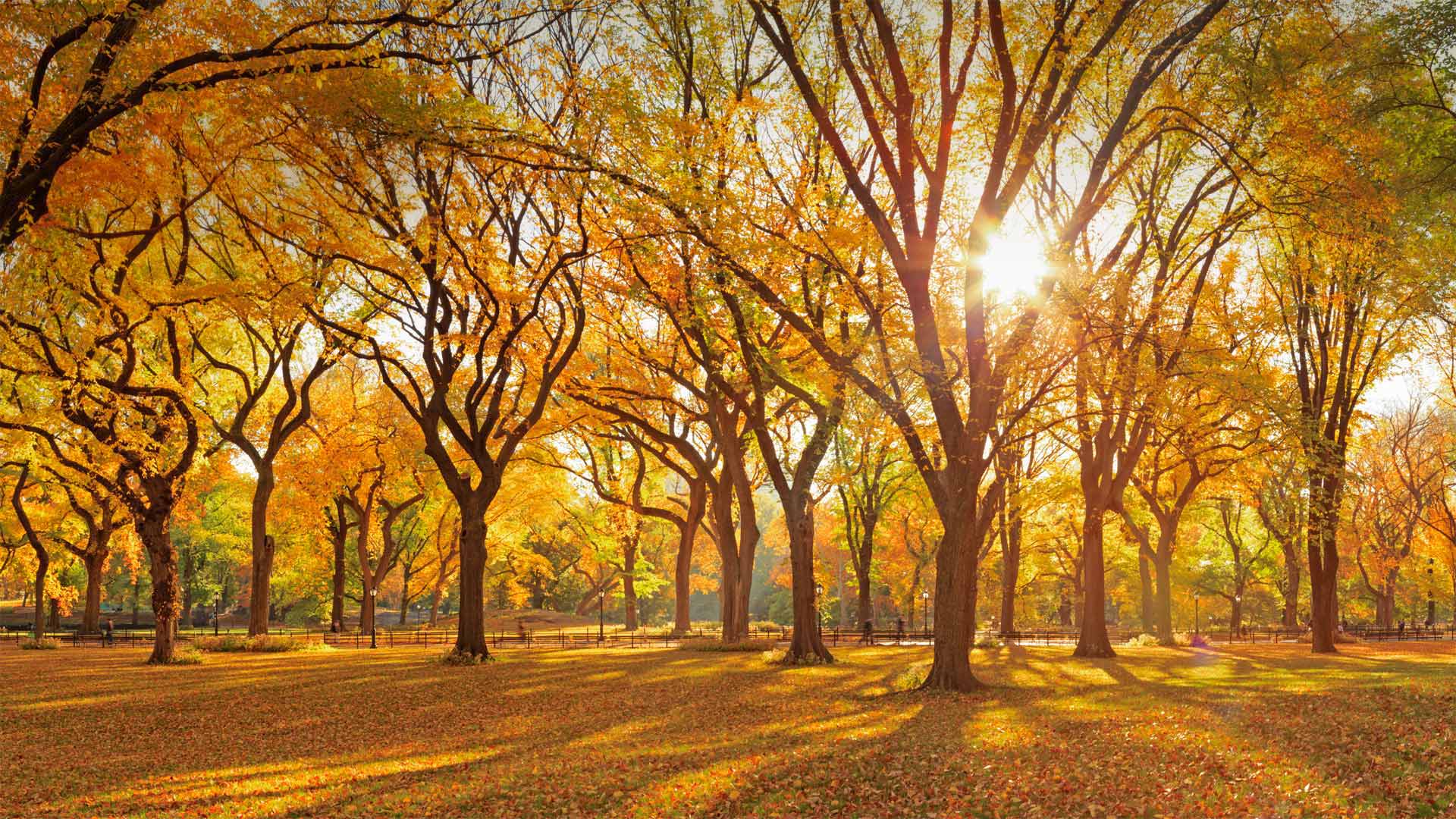
中央公园购物中心的美国榆树丛,纽约市 A grove of American elm trees in Central Park's Mall, New York City (© AWL Images/Danita Delimont)
A dying breed of tree thrives in an American park
We're standing in the Mall of New York City's Central Park, in the middle of fall foliage season. When Frederick Law Olmstead and Calvert Vaux designed this quarter-mile walkway, they were inspired by Europe's public spaces. They envisioned a 'grand promenade' where people of all backgrounds, from the city's monied elite to those of lesser status, could come together and mingle.
Today, the Mall remains one of Central Park's most popular and iconic features. Olmstead designed the pedestrian walkway to be the only straight path in all the park. Lining the path on either side is a majestic canopy made from hundreds of American elms. Chances are, you've seen an Elm Street in an American town or two. These majestic trees once populated many parts of the country but were devastated by Dutch elm disease beginning in the 1930s. The trees here in the Mall make up one of the oldest living stands of American elms in North America. They stand today, not only alive, but thriving, thanks to dedicated Central Park arborists who monitor and protect them. When a tree must be removed—in a bad year, the park can lose up to 35 trees—a new one is planted in its place.
巨浪冲击着阿斯洛玛尔州立海滩的岩石,加利福尼亚州帕西菲克格罗夫 Huge waves crashing on rocks along Asilomar State Beach, Pacific Grove, California (© Sheila Haddad/Danita Delimont)
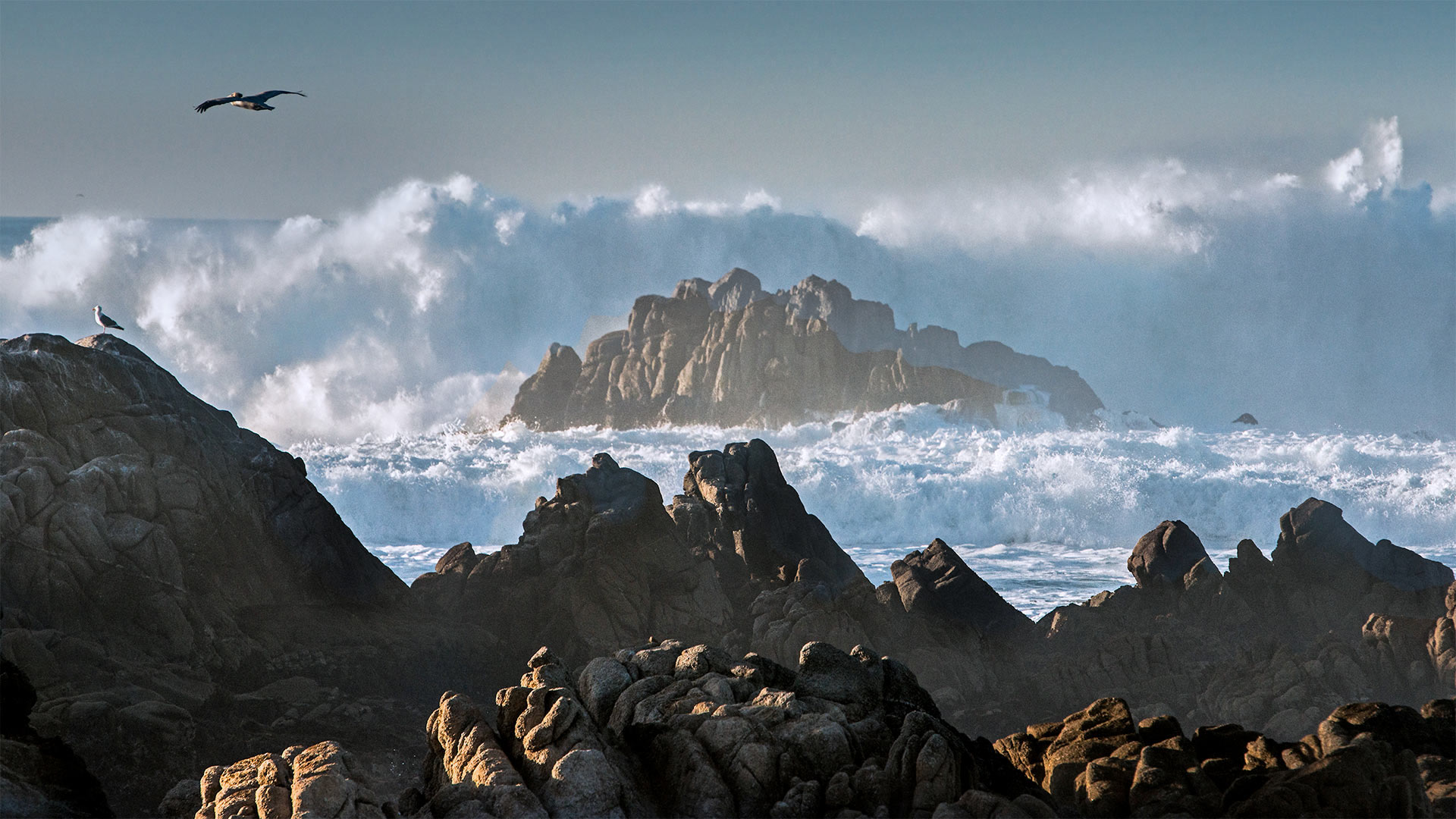
巨浪冲击着阿斯洛玛尔州立海滩的岩石,加利福尼亚州帕西菲克格罗夫 Huge waves crashing on rocks along Asilomar State Beach, Pacific Grove, California (© Sheila Haddad/Danita Delimont)
Feel the spray in Monterey
Fantasizing about warm, sandy beaches with gently lapping waves? Well, we decided you could use a shake-up—so here we are in Monterey County, California, for a glimpse at the ocean's raw, unadulterated power. Asilomar State Beach's mile-long coastline trail offers views like this one of seas crashing on jagged shores. Below the frothy surface swim innumerable ocean organisms protected by the massive Monterey Bay National Marine Sanctuary, the largest marine preserve in the contiguous United States. Behind us, a rich dune habitat supporting its own delicate flora and fauna can be explored via a boardwalk trail.
伯尔尼老城,瑞士 Old Town of Bern, Switzerland (© Simon Zenger/Alamy)
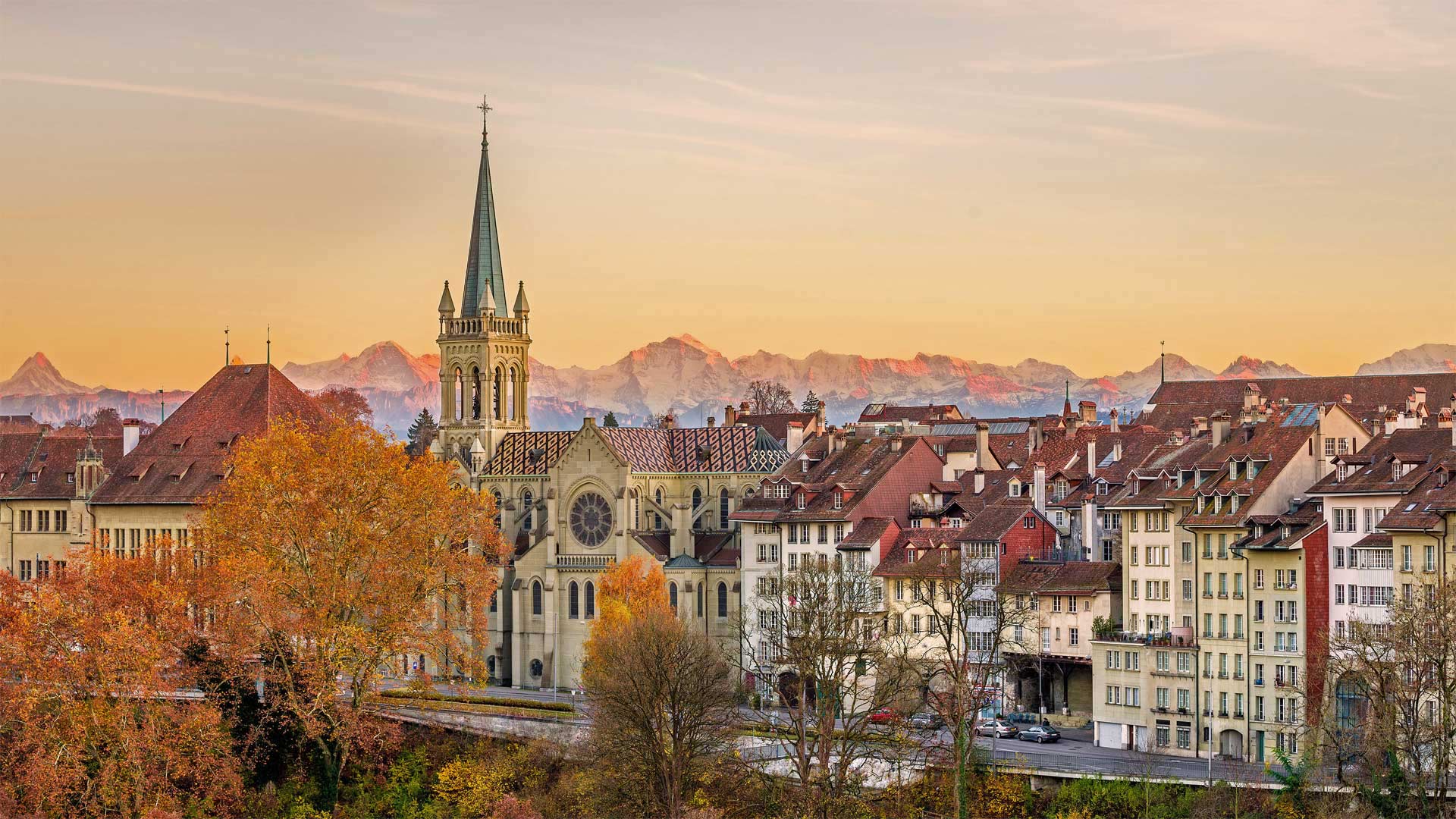
伯尔尼老城,瑞士 Old Town of Bern, Switzerland (© Simon Zenger/Alamy)
Autumn comes to Old Town
The medieval center of Bern, Switzerland's capital, looks much as it did when most of these buildings were first constructed between the 12th and the 15th centuries. What's now called Old Town was founded in 1191 on a long, narrow peninsula surrounded on three sides by the Aare River. As Bern grew over the centuries, it erected defensive walls and moats only to tear them down again with each successive wave of expansion. In their place are now broad public spaces for outdoor cafes and markets, like the Zibelemärit (Onion Market), an annual fall tradition.
Since at least the 1850s—and possibly much longer ago—the people of Bern have awakened very early on the fourth Monday of November to greet farmers who come to the city offering huge, beautiful garlands of onions and garlic for sale. This year, the coronavirus pandemic has put a stop to the public festival, but we're quite sure that on the streets of Bern's Old Town, the aroma of onion tarts and Glühwein is wafting out onto the streets from these perfectly preserved medieval houses.
普莱斯湖中冰封的秋叶,北卡罗莱纳州朱利安·普莱斯纪念公园 Autumn leaves frozen in ice, Price Lake, Julian Price Memorial Park, Blue Ridge Parkway, North Carolina (© Richard Bernabe/Offset by Shutterstock)
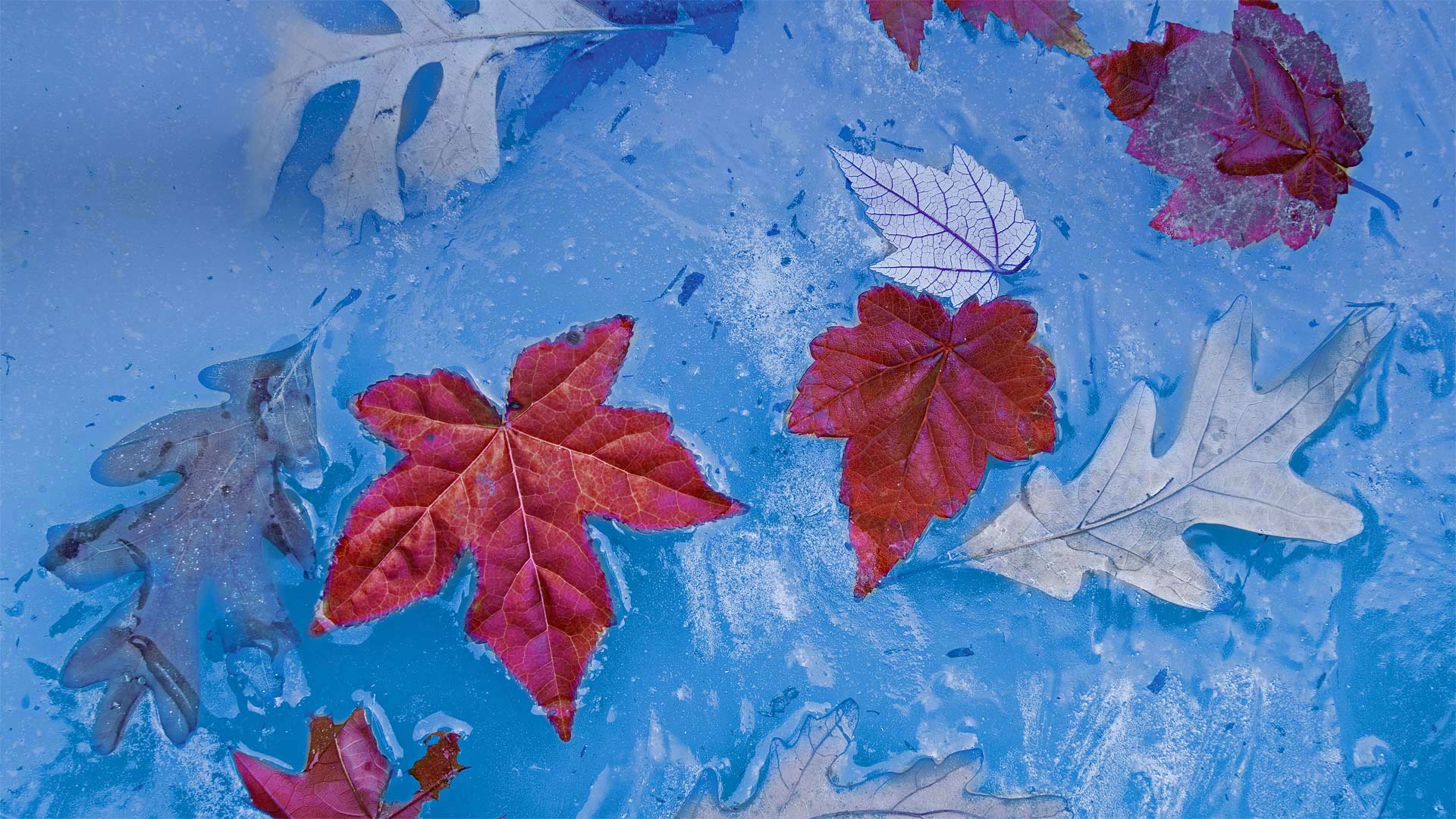
普莱斯湖中冰封的秋叶,北卡罗莱纳州朱利安·普莱斯纪念公园 Autumn leaves frozen in ice, Price Lake, Julian Price Memorial Park, Blue Ridge Parkway, North Carolina (© Richard Bernabe/Offset by Shutterstock)
Headed to the High Country
Sometimes the transition from fall to winter is an abrupt one—as demonstrated by these pristine, colorful leaves seemingly frozen in time. The cold might convince you we're enjoying a customary leaf-peeping tour of frigid New England—but we're hundreds of miles farther south.
Set in the High Country of western North Carolina, Julian Price Memorial Park is just one stop along the scenic Blue Ridge Parkway. Running nearly 500 miles from Shenandoah National Park in Virginia to North Carolina's portion of the Great Smoky Mountains, 'America's Favorite Drive' is one of the most popular attractions of the National Park System.
鸟瞰勃朗峰山脉中的南针峰,法国 Aerial view of the Aiguille du Midi in the Mont Blanc massif, France (© Amazing Aerial Agency/Offset by Shutterstock)
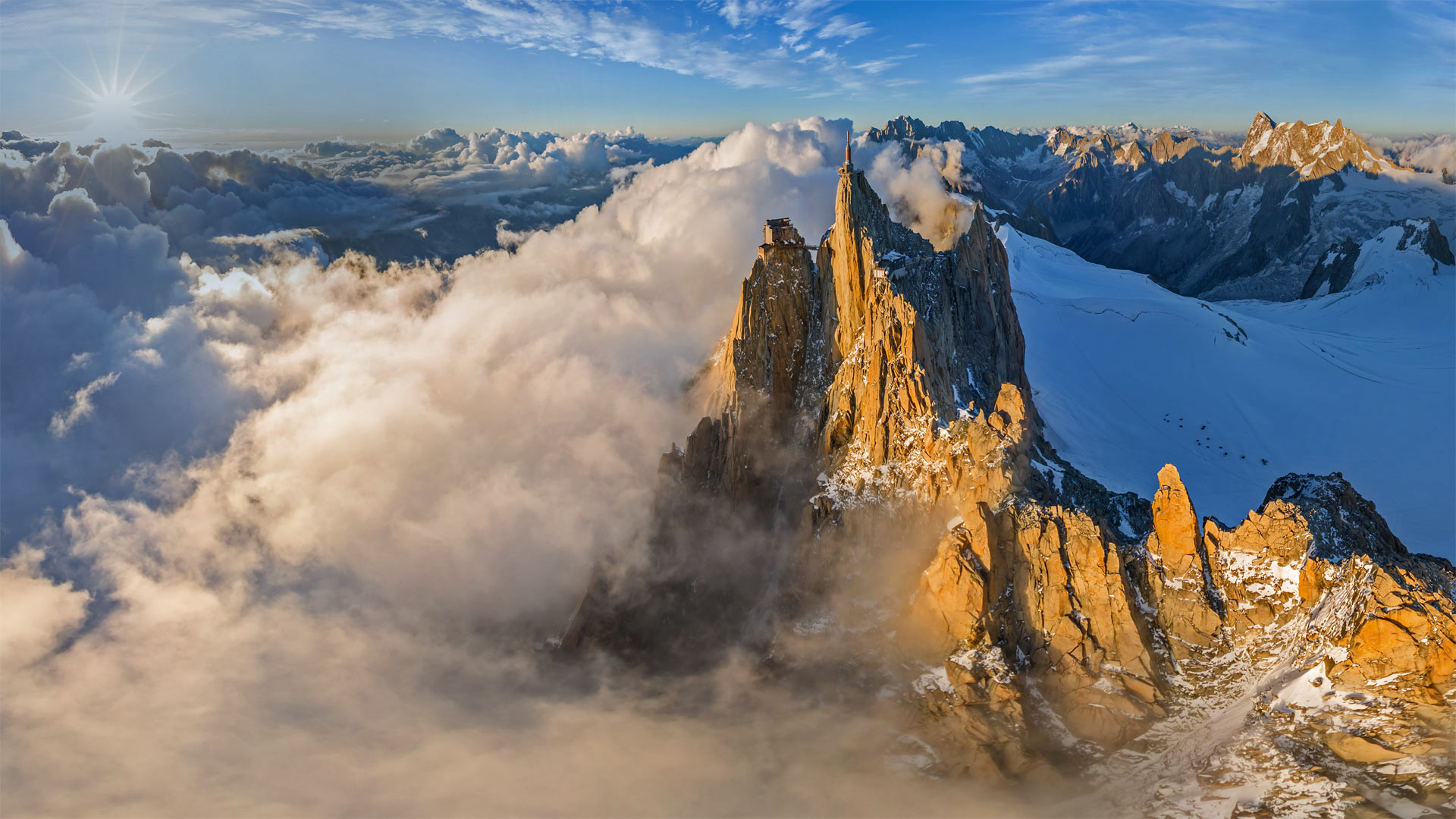
鸟瞰勃朗峰山脉中的南针峰,法国 Aerial view of the Aiguille du Midi in the Mont Blanc massif, France (© Amazing Aerial Agency/Offset by Shutterstock)
Atop the Needle of Chamonix
With these dramatic clouds, the shard-like pinnacles of the Aiguille du Midi (Needle of Midday) resemble the spires of a ruined Alpine cathedral. This is just one of the many spectacular peaks of the Mont Blanc massif, the storied Alps range in eastern France that stretches across the border into Italy and Switzerland. It was here in France's Chamonix valley that mountaineering first became a sport in the mid-1700s. This dramatic peak was summited in 1818, a feat that helped to popularize mountain climbing throughout Europe.
Skilled mountaineers still climb the Aiguille du Midi, but these days the rest of us can choose to reach the top the easy way. A cable car to the summit went into service in 1955 and is still considered the highest vertical-ascent cable car in the world. Visitors can climb aboard in the valley town of Chamonix and ride to the top of the Aiguille du Midi—more than 9,000 vertical feet—in under 20 minutes. The cable cars and viewing platform were upgraded in recent years, and a new feature called 'Step into the Void' was added in 2013. It allows courageous tourists to stand in a glass room jutting out from the mountain and look down through the glass floor with more than 3,000 feet of free air under their feet.
被北极光映衬出轮廓的因努伊特石堆,加拿大西北地区 Inukshuk silhouetted against the Northern Lights in Barren Lands, Northwest Territories, Canada (© Mark Duffy/Alamy)
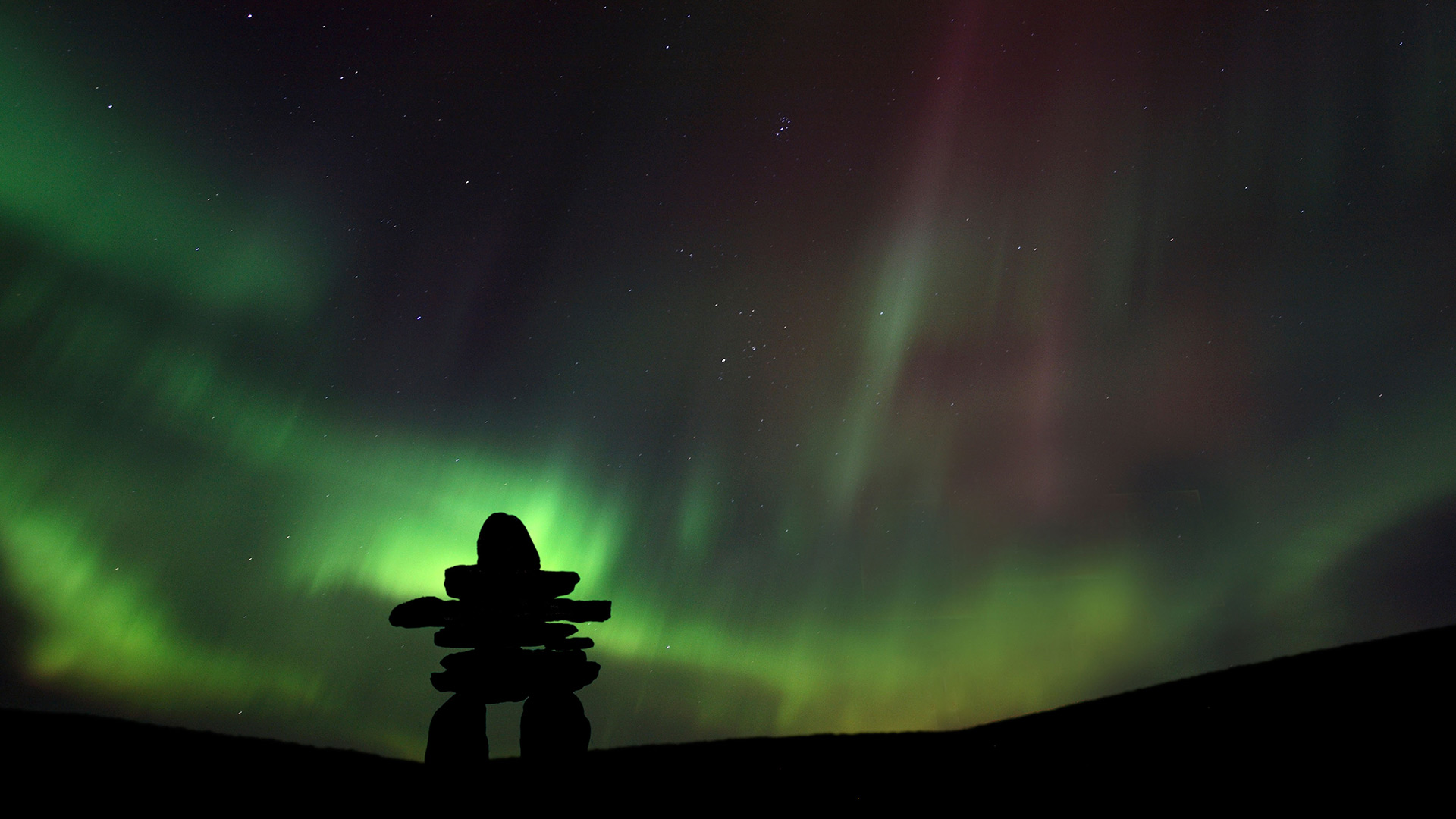
被北极光映衬出轮廓的因努伊特石堆,加拿大西北地区 Inukshuk silhouetted against the Northern Lights in Barren Lands, Northwest Territories, Canada (© Mark Duffy/Alamy)
A symbol of culture and communication
In Arctic Canada, an inukshuk is a monument that is built and placed by the Inuit who were the first people to inhabit the region. It is used as an aid for navigation, hunting tasks and sits as a centre for communication as well. An Inukshuk is made of stacked stones and is an integral part of the Inuit culture. Every stone in the structure has a purpose. It could be a warning of danger, pointing to a fishing spot or even indicating where food is hidden. Since the Inukshuk serves as an important form of communication, destroying one is strictly prohibited in Inuit culture.
The human-like stone figure pictured here is commonly mistaken to be an inukshuk. The Inuit call it inunnquaq, which refers to ‘in the likeness of a human.’ This structure consists of a figure that resembles a human with arms, legs and a head. While it doesn’t necessarily serve the same purpose as the inukshuk, it stands as a popular cultural symbol that was also used as an emblem for the 2010 Winter Olympics in Vancouver.
Andy Goldsworthy's 'Wood Line' installation along Lovers' Lane in the Presidio of San Francisco, California (© Chris LaBasco/Alamy)
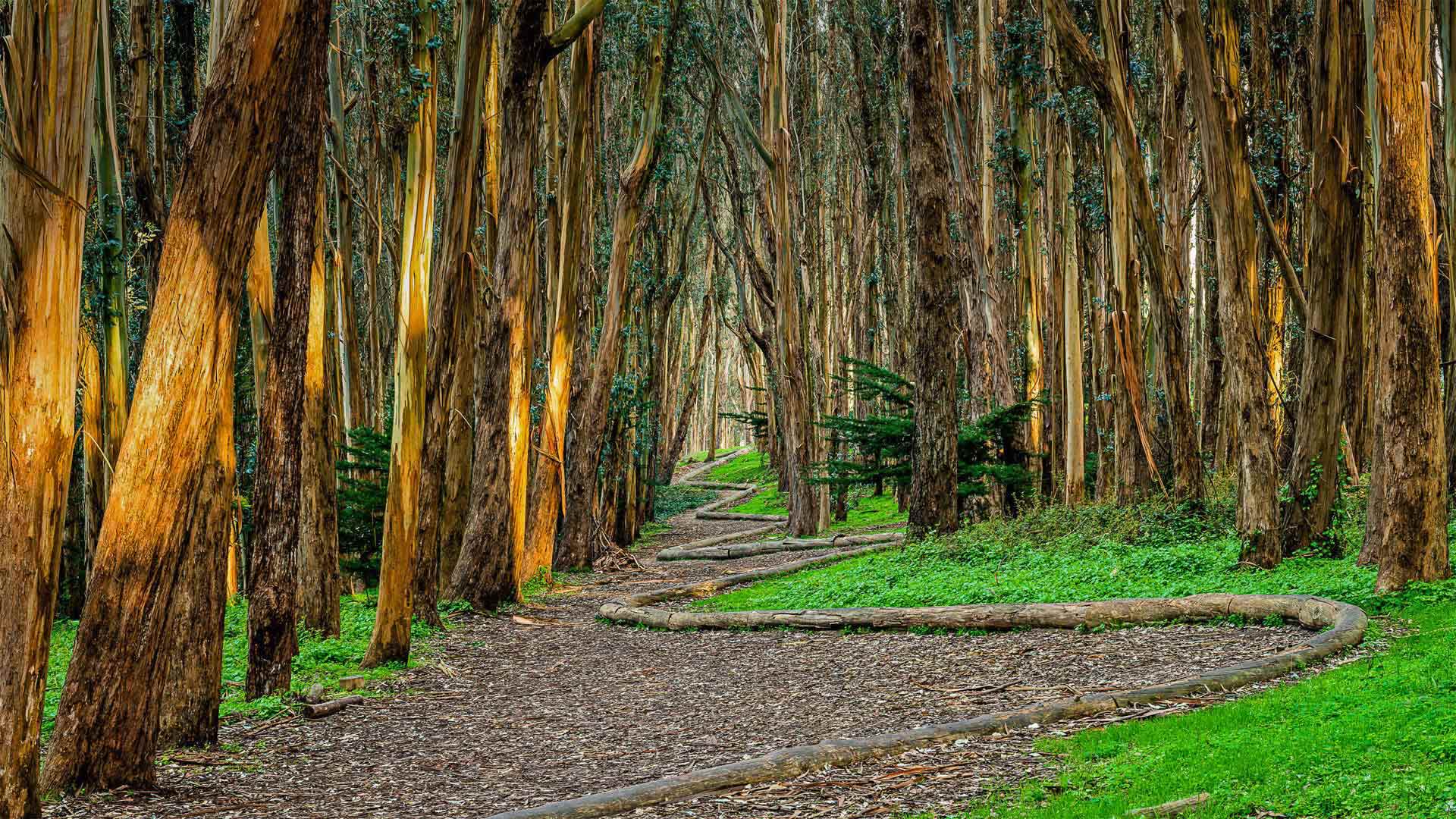
Andy Goldsworthy's 'Wood Line' installation along Lovers' Lane in the Presidio of San Francisco, California (© Chris LaBasco/Alamy)
Take a hike near Lovers' Lane
For those of you who love getting outside, you're in luck! Today is Take a Hike Day, an activity the American Hiking Society says will make you happier as you enjoy the great outdoors. And what better way to take a hike than a walk down Lovers' Lane in San Francisco's Presidio? The sinewy trail we see in today's photo is called 'Wood Line' and was designed by the environmental artist Andy Goldsworthy. By using felled eucalyptus trees, Goldsworthy intended this land art to eventually biodegrade and fade back into the forest floor. It's one of four of his works within this national park that once served as a US military outpost.
No matter where you are, we hope you'll find the closest trail to explore. The US National Trail System maintains more than 55,000 miles of National Scenic, Historic, or Recreational trails through some of the most beautiful, interesting parts of the country, so you have plenty of hikes to choose from.
混交林,菲森,巴伐利亚,德国 (© Erich Kuchling/DEEPOL by plainpicture)
The interior of the Abu Simbel Great Temple in Egypt (© George Steinmetz/Getty Images)
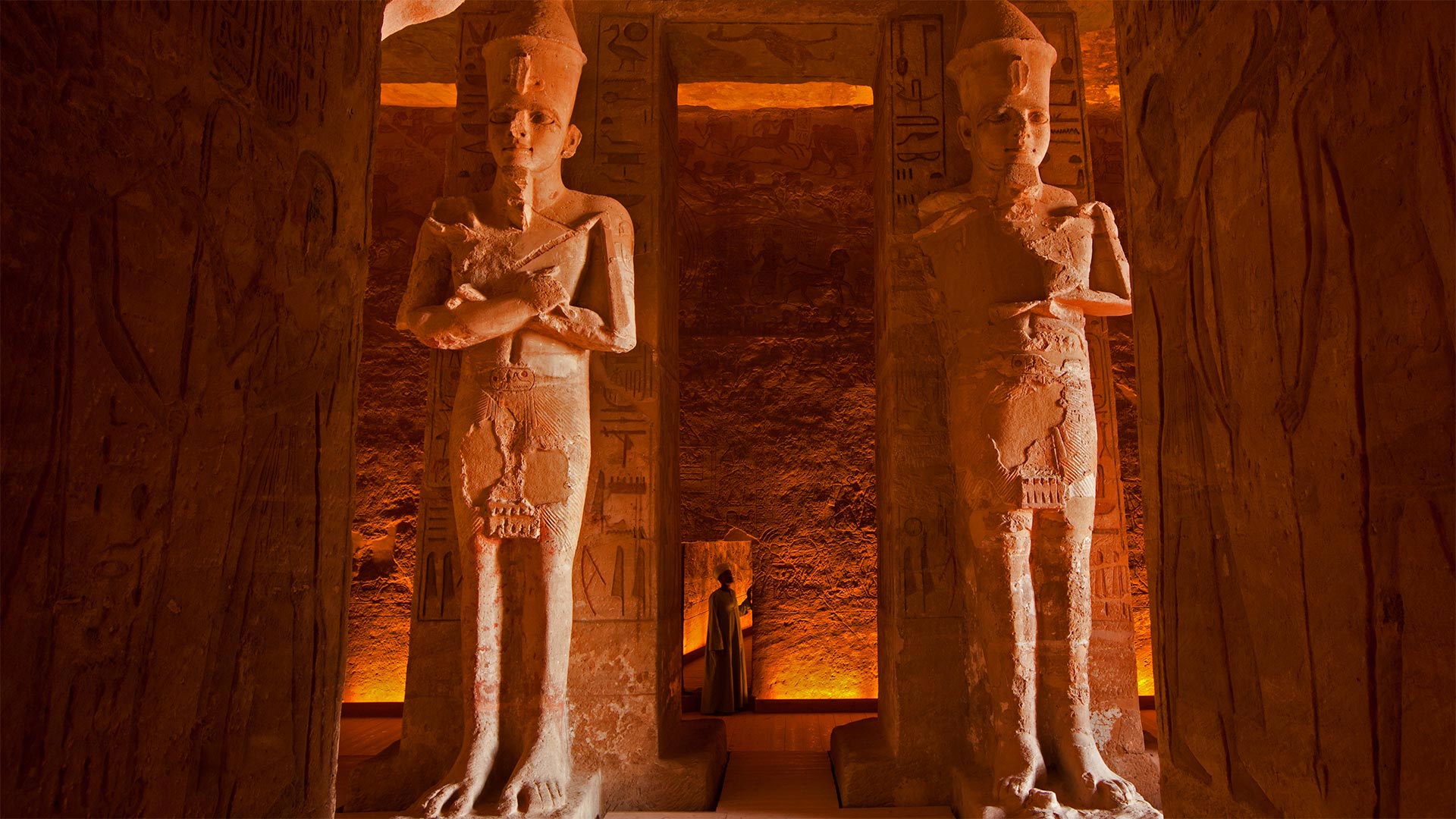
The interior of the Abu Simbel Great Temple in Egypt (© George Steinmetz/Getty Images)
A temple, preserved
These temples, commissioned by Egyptian pharaoh Ramesses II around 1264 BCE, would not be around for us to photograph if it weren't for the efforts of the United Nations Educational, Scientific and Cultural Organization (UNESCO). A couple centuries after the Abu Simbel temples were completed, Ramesses' empire had collapsed and the sands of the Nubian region of North Africa began to consume them. European explorers 'discovered' Abu Simbel in the early 1800s, leading to massive efforts to excavate and preserve the ruins of the great pharaoh's monument to himself.
But it wasn't until the 1950s, when the Egyptian government began drawing up plans for the Aswan High Dam, that preservation of Abu Simbel and other historic sites took on extra urgency. Planners knew the dam would flood the banks of the Nile, submerging the temples. So, the United Nations' UNESCO branch set to work on a solution to keep Abu Simbel preserved and accessible. In 1968, UNESCO's first major project was to literally move the massive temples to higher ground. They succeeded, of course, safeguarding one of the world's great archaeological sites. Out of this effort emerged UNESCO's drive to protect the world's most important sites of both cultural and natural heritage. To date, UNESCO has protected more than 1,000 World Heritage Sites across 167 countries that are ‘irreplaceable sources of life and inspiration.'
